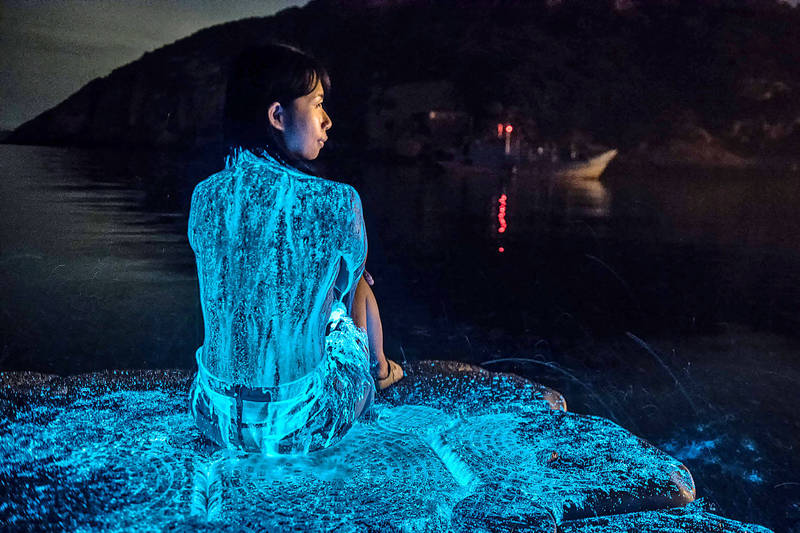《TAIPEI TIMES》Bioluminescent algae photo not harmful: professor

A tourist covered in bioluminescent algae is photographed in Lienchiang County in an undated photograph. Photo courtesy of Chou Chih-hsiao via CNA
Staff writer, with CNA
A viral photograph of a tourist covered in bioluminescent algae and glowing a fluorescent blue on the Matsu islands has sparked debate over whether such actions harm the environment.
The photo was originally posted online on May 17 by Chou Chih-hsiao (周治孝), a resident of Lienchiang County’s Beigan Township (北竿) who runs a Facebook group devoted to the luminescent phenomenon, which is known locally as “blue tears.”
Chou said he had achieved the effect in the photo by splashing large amounts of algae-laden seawater onto the subject, and then quickly taking a picture before it washed back into the sea.
Lin Wen-fu (林文福), a bed-and-breakfast owner on the county’s Dongju Island (東莒島), said there had been a massive algal bloom from May 14 to Wednesday last week.
Chiang Kuo-ping (蔣國平), a professor at National Taiwan Ocean University’s Institute of Marine Environment and Ecology, on Tuesday played down both concerns.
The phenomenon occurs annually between March and early July, when the Min River in China dumps large amounts of silicates into the waters around the Matsu islands, he said.
This influx of silicates creates an explosion in the population of microalgae called diatoms, and in turn, the Noctiluca scintillans algae that feed on them, Chiang said, adding that the bioluminescence is caused when the algae is disturbed.
The silicates that prompt N. scintillans blooms often come from land-based sand rather than pollutants, and the “blue tear” phenomenon is relatively “normal” in areas with turbid, nutrient-dense waters, Chiang said.
He said the vast majority of the algae captured in photos such as Chou’s flow right back into the sea, so the impact “is not very large.”
新聞來源:TAIPEI TIMES
















